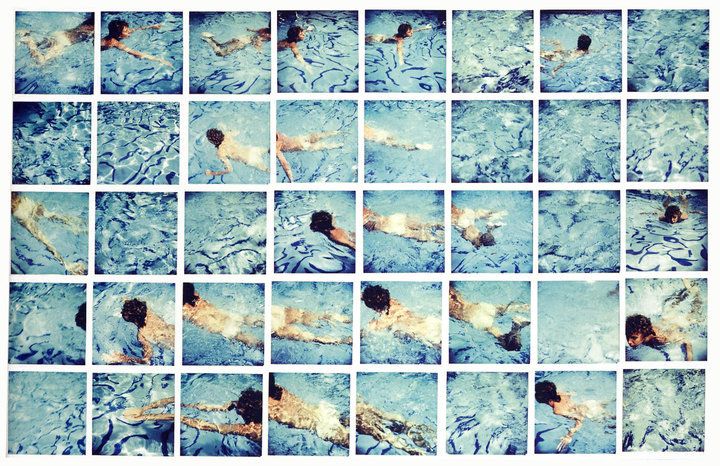CURATOR Mark Haworth-Booth OTHER VENUES Robert McDougall Art Gallery, Christchurch, 1 August–7 September 1986; Dunedin Public Art Gallery, 13 September–19 October 1986; Auckland City Art Gallery, 11 December–25 January 1987 ORGANISERS British Council, New Zealand Art Gallery Directors' Council SPONSORS British Paints, New Zealand Line, The Australian Line, Queen Elizabeth II Arts Council
David Hockney is one of the world's most popular artists. Now based in Los Angeles, the British artist is best known as a painter, but is also a printmaker, set designer, and photographer. Curated by Mark Haworth-Booth, from London’s Victoria and Albert Museum, Hockney’s Photographs consists of 101 photographic works, from 1968 to 1984. It opens at the Hayward Gallery, London, and tours Japan and Australia before arriving in New Zealand.
The show is divided into three sections. The first is a selection from Hockney's photo albums, which date back to 1961. The albums contain over 20,000 snapshots—showing friends, holidays, works, and exhibitions. The albums are represented by single pages and double-page spreads.
Hockney calls individual photos ‘one eyes’. Until the early 1980s, he sees photography merely as an 'aide memoire' for his painting and as a hobby—albeit an avid one. He considers photography's major flaw to be its inability to layer time. 'Sometimes I think photography isn't really much at all and people have got it all wrong’, he says. His attitude changes in 1982, after Alain Seyag, Curator of Photography at the Centre Georges Pompidou, leaves him with a Polaroid camera and dozens of packets of film. Hockney arrays multiple Polaroids to build up a view of his Los Angeles home, overcoming the 'one-eyed frozen moment'. These works are first exhibited in 1982, in the show Drawing with the Camera.
The Polaroids arrays are followed by ‘joiners’ made of 35mm snaps, processed and printed at the local photomat, overlaid and glued into position. These make up the third section of the show. Examples include The Brooklyn Bridge (1982), Luncheon at the British Embassy, Tokyo (1983), and The Wedding of David and Ann in Hawaii (1983). Some are large, such as the one-metre tall by two-and-a-half-metre-wide panorama of the Grand Canyon, which is made up of hundreds of overlapping photographs. (The 'joiners' were anticipated by a work Hockney made in 1967, combining a photo he took of his friend Peter Schlesinger and one Schlesinger took of himself.)
The show is worth $2m. The Gallery has to block out natural light and install air conditioning to protect the works. It is the Gallery’s first charge show: $3 for adults, $2 for unwaged, $5 for a family ticket, $1 a head for school groups. As part of the public programme the gallery holds a debate. The moot point: Hockney's quote, 'Photography is all right if you don't mind looking at the world from the point of view of a paralysed cyclops—for a split second.' Chaired by Lita Barrie, the panel includes Rob Taylor, Janet Bayly, Jenny Harper, Bill Main, Tony Wincup, and Robert Leonard. The show also includes a short, experimental film, adapting Hockney's collage technique to film.
Evening Post art critic Ian Wedde writes, 'Hockney's solution was to turn photography into painting—not in the reverse photorealist sense, but by making the individual images or shards produced by a camera do the work of a brushstroke … Hockney's photocollages now seem to have found the crispest, most obvious, almost the most simplistic way to revive the usefulness of the cubist experiment with time—in a sense, they use photography to rescue cubism for painting … the collages are often dazzling performances of drawing, in the primary sense of how to draw the eye through and across a composition or story.’








